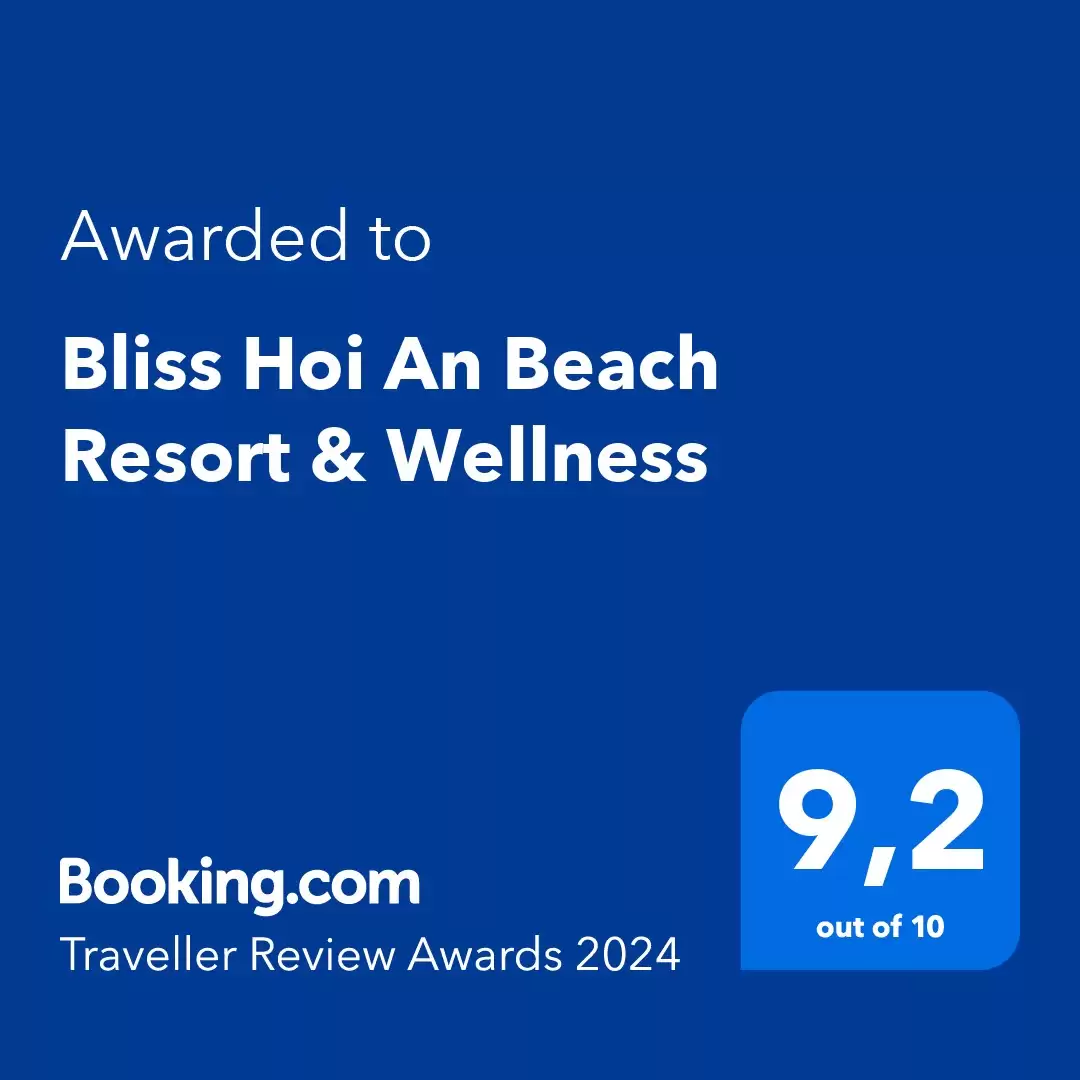Best time to visit Central Vietnam: A complete seasonal guide
Central Vietnam is a year-round destination, but picking the best time to visit Central Vietnam ensures you experience the region at its finest. Let’s dive into the seasonal breakdown to help you plan the perfect itinerary.
Overview of Central Vietnam’s climate
Central Vietnam stretches from Quang Binh to Binh Thuan, featuring a diverse landscape that includes coastal cities, mountains, and river valleys. The region experiences a tropical monsoon climate, strongly influenced by seasonal winds and geographical variations, leading to noticeable differences in weather throughout the year.
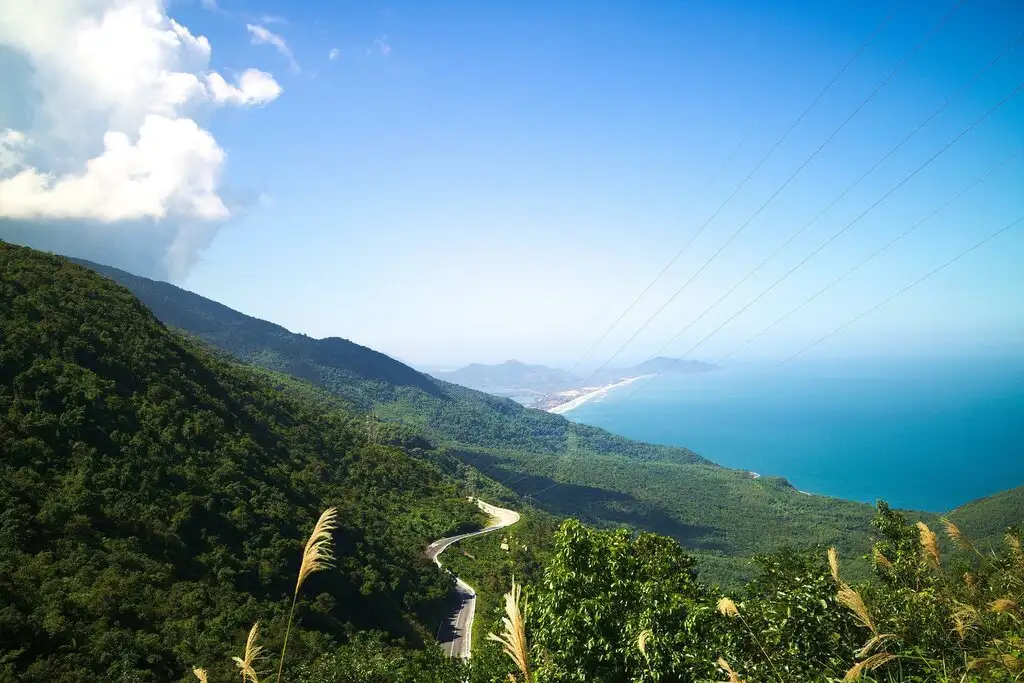
The average annual temperature in Central Vietnam ranges from 22°C to 30°C. The hottest months are June to August, when temperatures can rise above 35°C, especially in lowland areas like Da Nang and Nha Trang. In contrast, the coolest months are December to February, with temperatures dropping to 18°C – 22°C in cities like Hue and Quang Binh. In the highland regions, such as Da Lat and the Annamite Range, temperatures can be even lower.
Rainfall in Central Vietnam varies significantly by location. The region receives 1,500mm to 4,000mm of rain annually, with the highest amounts recorded in mountainous areas. The wettest months are from September to December, when heavy monsoon rains and occasional typhoons can cause flooding, particularly in coastal areas like Hoi An and Hue. Meanwhile, the dry season from January to August sees minimal rainfall, making it the best time for beach activities and outdoor exploration.
Central Vietnam weather by season
Central Vietnam experiences distinct seasonal variations due to its tropical monsoon climate. Unlike the north, which has four seasons, this region mainly has a dry season and a rainy season, though some areas still feel a slight transition between spring, summer, autumn, and winter. Each season brings unique weather patterns that can greatly impact travel plans.
Dry season (January – August)
The dry season in Central Vietnam lasts from January to August, offering warm temperatures, minimal rainfall, and plenty of sunshine. This period is considered the best time for tourism, especially for beach activities and outdoor adventures.
During the early dry season, from January to March, the weather is cool and pleasant, with average temperatures ranging from 22°C to 26°C. This is an excellent time for sightseeing in cities like Hue, Hoi An, and Da Nang, as well as exploring historical sites and nature reserves.
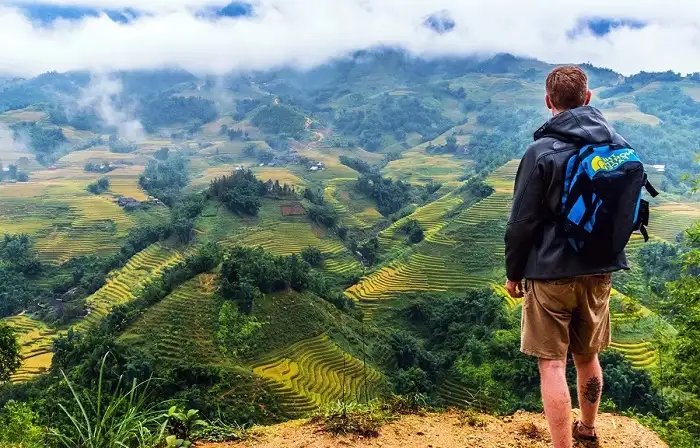
From April to August, temperatures rise significantly, often exceeding 30°C to 35°C, especially in lowland coastal areas. This is the peak season for beach destinations like Da Nang, Nha Trang, and Quy Nhon, where clear skies and warm waters create perfect conditions for swimming, snorkeling, and sunbathing. However, the heat can be intense, so visitors should stay hydrated and avoid outdoor activities during midday hours.
The dry season also marks the time for many festivals and cultural events, such as the Hue Festival (April or May, every two years) and the Da Nang International Fireworks Festival (June – July). Since this is a popular period for both domestic and international travelers, it’s recommended to book accommodations and transportation in advance to secure the best options.
With favorable weather and exciting activities, the dry season is the ideal time to visit Central Vietnam, particularly for those seeking sunshine, cultural experiences, and outdoor adventures.
Rainy season (September – December)
The rainy season in Central Vietnam spans from September to December, bringing increased rainfall, cooler temperatures, and occasional storms. This period is characterized by high humidity and unpredictable weather patterns, making it a less popular time for beachgoers but an interesting season for those who enjoy a more tranquil and atmospheric travel experience.
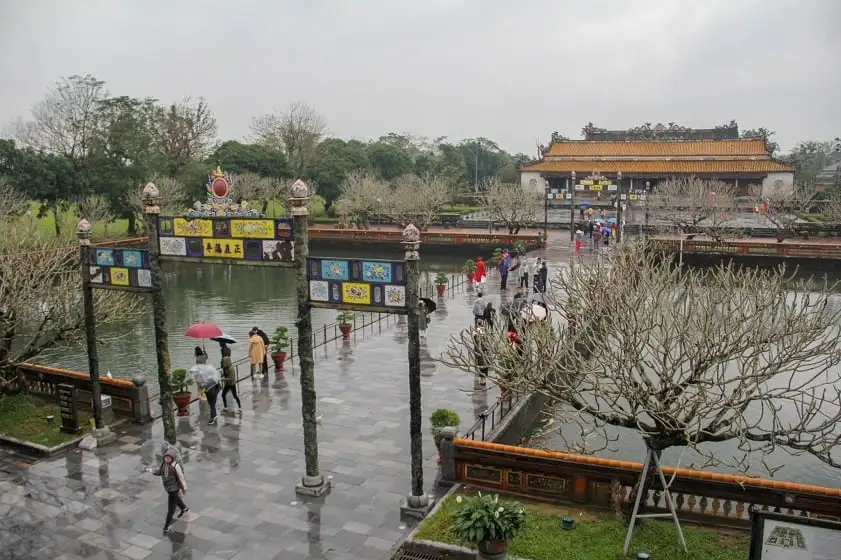
From September to early November, the region experiences frequent showers and occasional typhoons, especially in coastal areas like Hoi An, Hue, and Da Nang. Heavy rainfall can sometimes lead to flooding, affecting transportation and outdoor activities. However, the lush landscapes and mist-covered mountains during this time create a unique and picturesque setting, ideal for travelers who enjoy photography and cultural exploration.
As December approaches, rainfall gradually decreases, and temperatures drop to a more comfortable range of 18°C – 24°C. This cooler climate makes it a great time to visit historical and cultural sites, such as the ancient town of Hoi An or the imperial city of Hue, without the usual crowds. Additionally, this is the season for several traditional festivals, including local celebrations leading up to the Lunar New Year.
While the rainy season may not be ideal for typical beach vacations, it offers a different side of Central Vietnam, one filled with serene landscapes, fewer tourists, and rich cultural experiences. For those willing to embrace the changing weather, this season provides a peaceful and authentic travel experience away from the peak-season crowds.
Best time to visit Central Vietnam
Deciding on the best time to visit Central Vietnam can make a huge difference in your travel experience. This region has a tropical monsoon climate, meaning weather conditions vary throughout the year, influencing everything from sightseeing to outdoor activities.
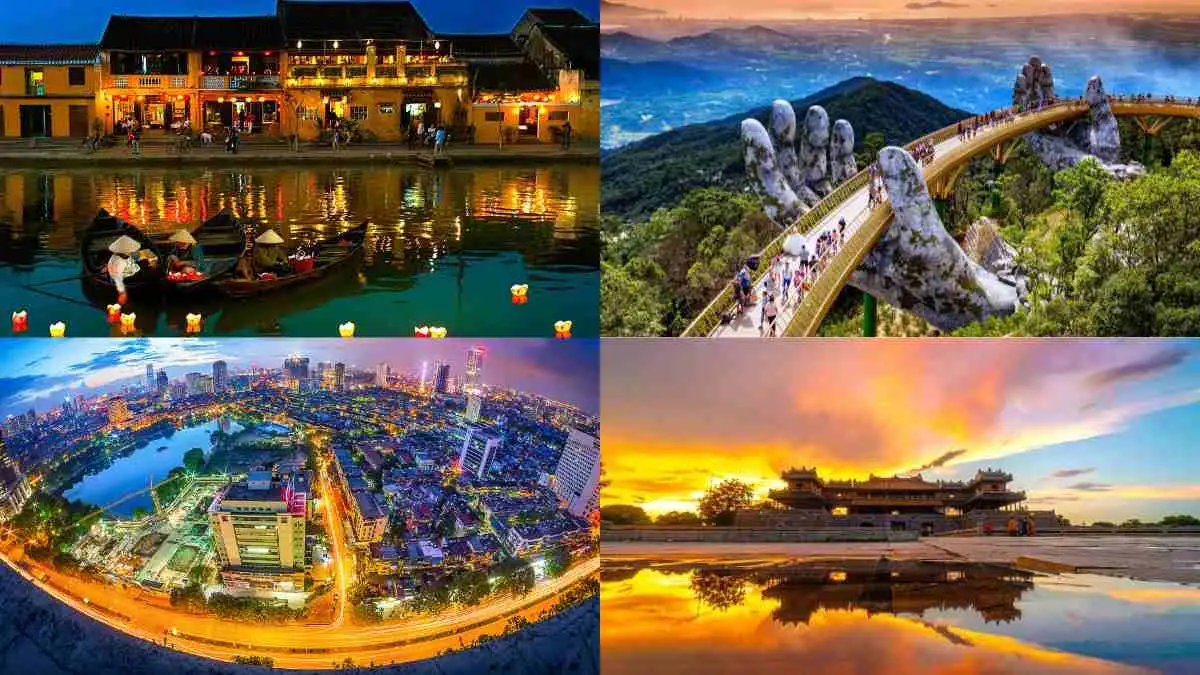
The ideal months to visit are February to May, when the weather is pleasant, with temperatures ranging from 22°C to 30°C. During this time, rainfall is low, making it perfect for exploring Hoi An, Da Nang, Hue, and other cultural landmarks. From June to August, the temperatures rise, often exceeding 35°C, making it the best time for beach lovers who want to enjoy the sunny coasts of Nha Trang, Quy Nhon, and Da Nang. However, this is also the peak tourist season, meaning popular attractions can be crowded, and hotel prices tend to be higher.
The rainy season from September to December is less ideal for beach vacations, as Central Vietnam experiences heavy rainfall and occasional typhoons. However, this period can be a great choice for those who prefer a quieter and more cultural experience, as the cooler weather is perfect for visiting historical sites and enjoying the local cuisine without the usual crowds.
Another factor to consider when planning a trip is the festival season. Central Vietnam hosts several cultural and international events that can enhance your experience. The Tet Holiday (Vietnamese Lunar New Year), which usually falls in late January or February, is the biggest celebration in Vietnam, bringing vibrant street decorations and festive markets. The Hue Festival, held biennially in April or May, showcases royal performances, parades, and exhibitions celebrating the region’s imperial heritage. For those visiting in summer, the Da Nang International Fireworks Festival (June – July) is a breathtaking event featuring firework displays from different countries.
For each major destination, the best time to visit may vary slightly. Hoi An and Da Nang are most enjoyable between February and May, when the weather is mild and dry. Hue, known for its historical sites, is best visited from March to May, before the summer heat becomes intense. Meanwhile, Nha Trang and Quy Nhon are ideal from April to August, when the sea is calm, and the skies are clear. Adventure seekers heading to Phong Nha – Ke Bang National Park should plan their trip between February and August for the best conditions for caving and outdoor activities.
Overall, the best time to visit Central Vietnam is from February to May, as this period offers comfortable temperatures, minimal rain, and fewer crowds compared to peak summer months. However, for those who enjoy beach vacations, June to August is also a great time despite the higher temperatures. By considering the seasonal weather, festivals, and peak travel periods, you can plan a well-timed trip to fully experience the beauty of Central Vietnam.
Travel tips for visiting Central Vietnam by season
Understanding the weather patterns in Central Vietnam will help you prepare for a smooth and enjoyable trip. Each season comes with its own challenges and advantages, so packing the right essentials and planning accordingly can make a big difference. Here are some important travel tips for both the dry season and the rainy season.
For the dry season
The dry season offers plenty of sunshine, minimal rainfall, and warm temperatures, making it the best time for outdoor activities and beach trips. However, the summer months can be extremely hot, so it’s important to prepare accordingly.
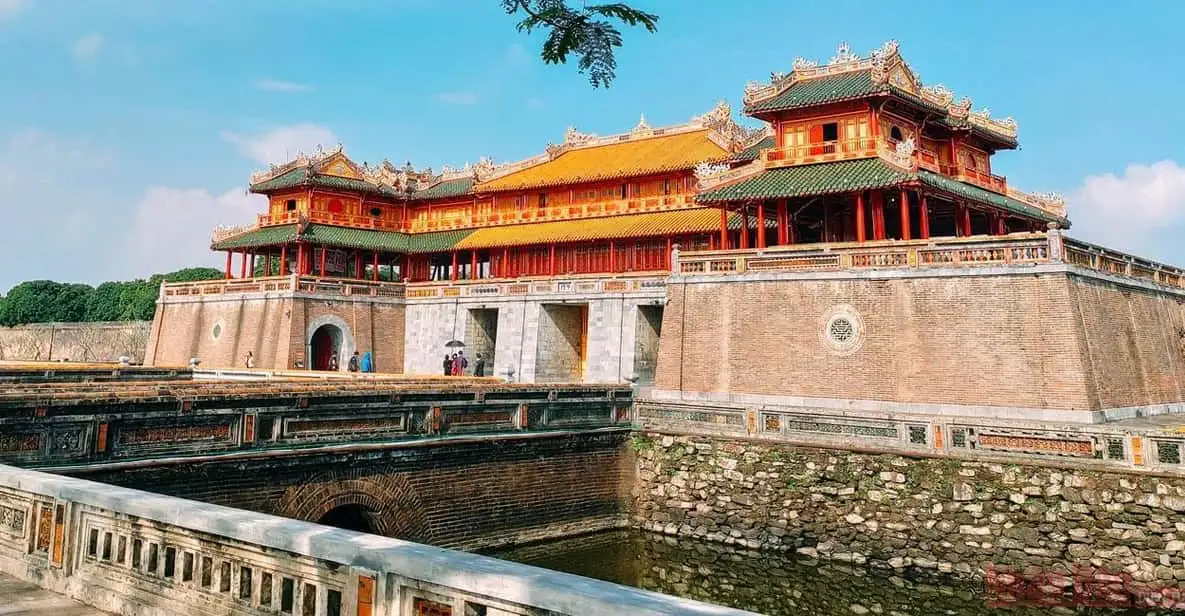
- Stay hydrated & protect yourself from the sun: From April to August, temperatures can exceed 35°C, especially in cities like Da Nang and Hue. Always carry water, sunscreen, sunglasses, and a hat to protect yourself from the intense sun.
- Book early during peak season: The months from March to August attract large crowds, especially in beach destinations like Nha Trang and Da Nang. If you’re traveling during this time, make sure to book flights, hotels, and tours in advance to secure the best deals.
- Explore early or late in the day: The midday heat can be overwhelming, especially in historical sites like Hue’s Imperial City or My Son Sanctuary. Plan outdoor activities for the early morning or late afternoon to avoid extreme heat.
- Prepare for crowds in popular tourist spots: Famous attractions such as Hoi An Ancient Town and Ba Na Hills can get very crowded during peak season. Visiting early in the morning or later in the evening can provide a more relaxed experience.
For the rainy season
The rainy season brings heavier rainfall, cooler temperatures, and occasional storms, which can sometimes affect travel plans. However, with the right preparation, you can still have a wonderful experience exploring Central Vietnam.
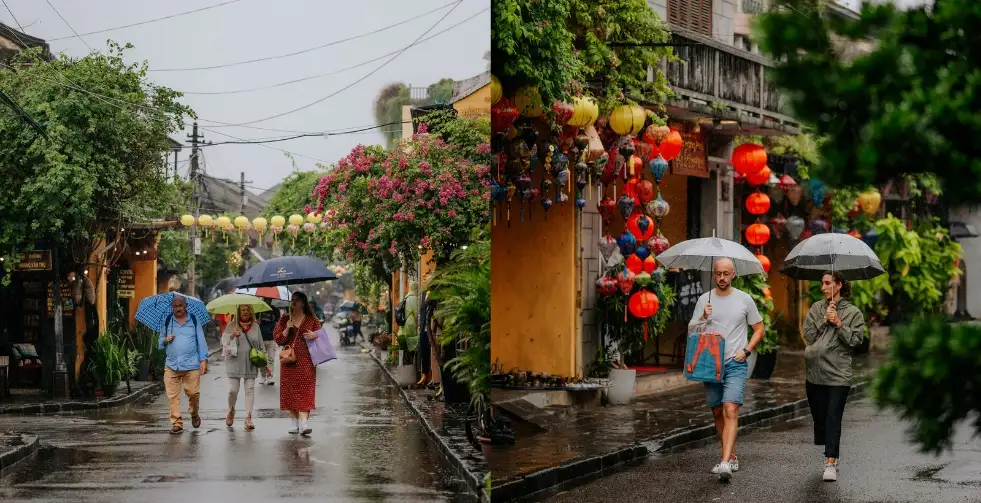
- Check weather updates regularly: Typhoons and heavy rains are common from September to November, especially in coastal areas like Hoi An and Da Nang. Keep an eye on weather forecasts and be flexible with your itinerary in case of sudden changes.
- Pack waterproof gear: Bring a light rain jacket, waterproof bags, and an umbrella to stay dry during unexpected downpours. Comfortable, quick-drying clothing and waterproof shoes are also recommended.
- Consider indoor activities: On rainy days, explore museums, temples, cooking classes, and cafés in cities like Hue and Hoi An. These experiences offer cultural insights while keeping you sheltered from the rain.
- Avoid remote or flood-prone areas: Some rural areas and national parks, such as Phong Nha – Ke Bang, may experience flooding during peak rainy months. Check conditions before visiting, and have alternative plans in case of bad weather.
Hope this article from Bliss Hoi An Beach Resort has helped you understand the climate better and determine the best time to visit Central Vietnam for a perfect trip. No matter when you visit, Central Vietnam will surely leave you with unforgettable experiences.






